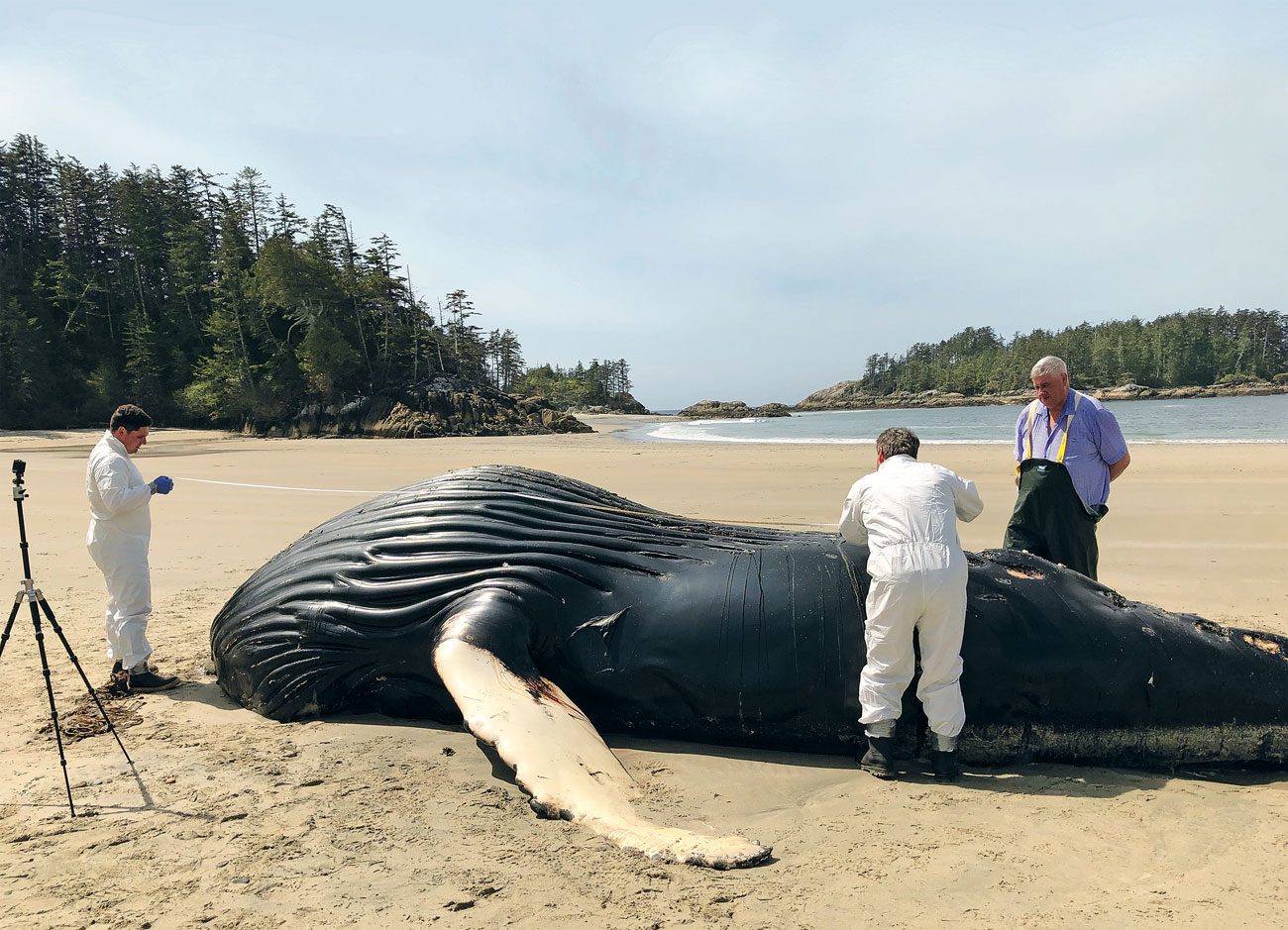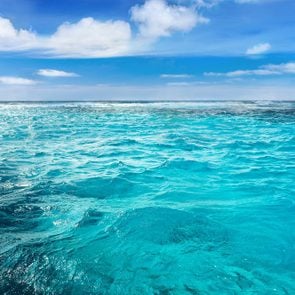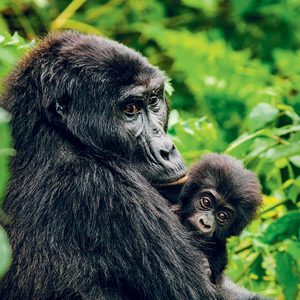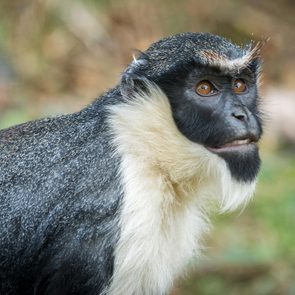CSI: Whale Edition—Meet the Team Behind Canada’s Marine Life Necropsies
Stephen Raverty’s team of B.C. investigators reconstruct cetacean deaths—to prevent even more from happening.

The tale of a whale
The whale on the beach has a story to tell, and Stephen Raverty is here to extract it.
The veterinary pathologist has travelled to British Columbia’s remote central coast on this sunny Sunday in May 2019 to perform a necropsy on a male humpback that washed ashore on the surf-tossed west side of Calvert Island.
Raverty is a towering man, dwarfed only by the whale itself. He struggled to get here, navigating up and down shoreline trails lined with exposed tree roots, and refusing to relinquish his case of heavy necropsy tools. He concedes that getting to the mammals on which he performs a necropsy analysis along rugged coastlines can be his least favourite part of the job.
Raverty works for the B.C. Ministry of Agriculture in an animal-health centre in Abbotsford, a little over an hour east of Vancouver. Relatively mundane work on domestic animals, including the search for poultry and cattle diseases, pays his bills.
His real passion has been marine life ever since he volunteered at the Vancouver Aquarium at age 12, peering over the shoulders of veterinary staff as they investigated diseases in fish, frogs, reptiles and even the odd harbour seal.
Nobody takes pleasure in this humpback’s death. But whales die for all manner of reasons, and when they do, Raverty can only hope they wash ashore on an accessible beach. This particular carcass was spotted two days ago by staff from the Hakai Institute’s Calvert Island Ecological Observatory, a research institution that studies remote coastal environments in British Columbia. The observatory alerted Fisheries and Oceans Canada (DFO), and Paul Cottrell, the agency’s marine mammal coordinator, contacted Raverty. The necropsy team is rounded out by Taylor Lehnhart, a DFO technician.
Raverty wipes sweat from his face, takes a gulp of water and sharpens a 25-centimetre forensic knife. He puts on gumboots and waterproof bib overalls, which are incinerated after about every third necropsy. “They just get a little too aromatic,” he says.
He walks around the carcass to assess the breadth of the task ahead and to look for clues pointing to the cause of death. I poke the carcass with my finger and it bounces back, like the hull of a rubberized inflatable craft.
This whale fetched up on its back during its northerly spring migration, eyes pressed against the sand, and furrowed belly with 25 ventral grooves pointing skyward. Raverty’s eyes follow the symmetry of the carcass, looking for abnormalities in alignment of the bones or unusual colouring that might suggest a lack of nutrition or injury.
Since the team can’t flip the hulking whale over, the back of the animal, including the top side of its spinal column, is largely inaccessible during the necropsy. Rising tides, the challenging access and a small necropsy team also hinder a fuller skeletal examination.
The whale is pockmarked with beak bites from scavenging bald eagles—now relegated to the shoreline trees, their squeaky-door calls imploring Raverty to get on with it.
The whale’s tongue is a gooey greyish blob protruding from the mouth. Raverty looks inside for foreign debris, such as plastics or fishing gear, or evidence of damage to the baleen, but finds none. Black skin peels from the tail flukes, which are tied to a tree with close to 50 metres of rope to prevent the tides from returning the carcass to sea.
Raverty leans over for a closer inspection of the pectoral fins on the sides of the whale—white on the bottom, dark on top, and mottled with freeloading barnacles. He observes scar lines near the base of each fin, suggesting the whale may have encountered fishing gear at some point in its life.
There’s more than idle curiosity at stake today. The necropsy results will form part of a baseline of information on the overall health of the humpback population—estimated at 25,000 or more in the North Pacific—and could potentially point to problems that humans are in a position to tackle, such as entanglement with fishing gear and ship strikes.
The necropsy is just one part of the investigation. Raverty relies upon a host of experts—lab technicians to analyze tissue samples, biologists, ecologists, oceanographers and climate-change specialists—whose findings will later contribute to a broader understanding of why marine mammals die. Half the time, necropsies don’t determine cause of death. “Each is a learning process,” he explains. “It provides a glimpse into the natural history of these animals.”
Raverty has performed more than 2,200 necropsies of marine mammals from across North America over the past two decades—not just of humpbacks, but killer, grey, fin and beluga whales, as well as seals and sea lions, porpoises, dolphins and sea otters. About 20 per cent of the necropsies are conducted in the field—generally on the whales, which are too big for transport—and the remainder are done in his lab under more controlled conditions.
DFO technically owns the carcass and issues permits to allow Raverty to take tissue samples for research purposes and to better inform federal management of marine mammals. It’s not unusual for him to work for free on his own time, such is his devotion to the job. “I basically hold his tools,” jokes Cottrell, who is Raverty’s right-hand man during such procedures. He also takes notes of the veterinary pathologist’s verbal comments as the necropsy unfolds.
Cottrell and Lehnhart measure today’s whale. The length is 7.82 metres, suggesting a juvenile about two years old. With the preliminary inspection over, it’s time to start slicing.
Raverty and Lehnhart use their knives to carve off heavy rectangular chunks of blubber and skeletal muscle to access the internal organs.
Thick blubber suggests the young humpback had been getting plenty of food. This sets him apart from the 215 grey whales—many, emaciated—that washed ashore in 2019 on the west coast of North America, from Mexico to Alaska. The poor condition could be a sign that the estimated population of 27,000 grey whales is at carrying capacity in the eastern North Pacific or that 2018 conditions in the Bering Strait provided insufficient food for the whales prior to their southerly migration.
This humpback carcass has been rotting away for perhaps a week, including the time before it washed ashore. With the exterior blubber removed, Raverty plunges his knife deep into the whale’s side. The odour that follows is repulsive. But Raverty has toughened up over the years. “I can’t smell it anymore,” he says. “I’ve gotten used to it, I guess.” As Raverty pushes the knife ever deeper, the mystery of this humpback deepens, too. The gonads and the internal organs have shifted from the abdominal cavity to the throat and chest. There are two potential explanations for this: blunt-force trauma, or the buildup of extreme internal pressure after death.
Next, Raverty proceeds past the ribs to expose the heart and lungs, which resemble a big slab of corned beef. One rib protrudes from the body like a piece of driftwood, next to coils of large intestines as thick as Raverty’s forearms and measuring perhaps 10 metres in length.
He announces he’s found the urinary bladder, too, but it’s lacking the urine he typically samples to screen for indication of muscle injury, harmful algal toxins and faulty kidney function.
At 2:20 p.m., it’s lunchtime—and, yes, sushi is off the menu. We dine on sprout sandwiches, cookies and apples. “I’ve tried bowhead whale meat,” Lehnhart offers as small talk. “It’s not very good.”
The hard physical work over, Cottrell and Lehnhart discard their stained coveralls for new ones as the necropsy shifts gears. “Round two, I’m ready,” Cottrell says. The team collects several tissue samples, ranging from two to 10 centimetres in thickness, and places them into sterile plastic bags, chilled with ice packs, to be lab tested for bacteria, fungi, viruses and harmful algal toxins such as domoic acid and saxitoxin.
Domoic acid can be poisonous to marine mammals such as California sea lions that eat small fish that feed on the toxic algae. The toxin can make its way into the sea lion’s bloodstream and its brain, causing seizures, heart disease and even death.
How these same toxins affect a creature as large as a whale remains unknown. One theory is that infected whales are at greater risk of ship strikes—the toxins may target the brain and cause disorientation.
They take a baleen sample to screen for feeding and hormone levels related to stress and reproduction. Cottrell pries off samples of a humpback-specific barnacle—a walnut-sized crustacean that spends its adult life embedded in the skin of whales, using its feathery leg-like cirri to grab a fast-food diet of tiny plankton as its host swims through the ocean.
“They’re taking a ride to the buffet,” Larry Taylor, a doctoral student at the University of California, Berkeley, tells me later. “These whales are travelling to rich, productive waters to feed, and the barnacles get to enjoy the feast.” Barnacles cause no apparent harm to the whales but can yield important information. Shell growth layers contain chemical signatures related to temperature and chemistry of the ocean waters visited by the whales, hinting at their migration routes.
The necropsy concludes after two hours, hurried by an incoming tide gnawing away at the sands.
Everyone heads back to the Hakai Institute’s facilities, knowing it will be months before all the samples have been analyzed and more light has been shed on the cause of the whale’s demise. Raverty takes one last look at the hacked-up carcass and offers an educated guess as to the cause of death: “I wouldn’t be surprised if it’s a fracture.”
Two days later, a four-person team led by Michael deRoos from Cetacea, a British Columbia company that specializes in creating skeleton exhibits, arrives to take up where the necropsy team left off. While separating the whale’s bones from the rest of its flesh, deRoos discovers extensive bruising of the flesh on one side of the skull and loose pieces of bones suggesting a possible fracture on the other. One plausible scenario is a ship strike near Hakai Pass, about five kilometres from where the whale washed up.
What we do know is that the food web benefitted. “There were quite a few wolf tracks around the whale,” deRoos says. “It’s a pretty big windfall for any scavengers out there. I imagined the wolves curled up with full bellies, somewhere in the bushes, watching us gut the thing up.”
The bones are put into slings and flown to the Hakai Institute’s property and then sunk into the seawater to let nature continue the defleshing process. In two or three months, deRoos explains, the bones will be taken to Cetacea for further treatment. Crews will reassemble the skeleton in segments before barging it in crates back to Calvert Island next summer to be put together and suspended as a full skeleton from the ceiling in the Hakai Institute’s communal dining room.
DeRoos’s previous work—the skeleton of an old male sea otter that washed ashore on Calvert Island in 2016—already hangs in the lodge, meticulously reconstructed so that it appears to be diving for a sea urchin. Eric Peterson, who co-founded the Hakai Institute with Christina Munck, his wife, expects deRoos to give the whale skeleton a similar treatment. “It’s a celebration of one of nature’s great creatures and a celebration of the skill and ingenuity of an artist doing incredible work in an interesting medium,” Peterson explains.
In the meantime, labs across North America will continue to extract information from samples collected by Raverty and his team. A U.S. National Oceanic and Atmospheric Administration office located in Seattle, Wash., gets material, with additional samples headed to other state and university veterinary labs with expertise in marine mammal health. The barnacles end up at the California Academy of Sciences, as part of graduate students’ research projects, while the National Institutes of Health in Maryland looks for unusual disease agents such as the cat parasite Toxoplasma gondii, flushed into the oceans through toilets.
Some tissue and blood samples will also be frozen and available to scientists launching new studies years or even decades from now. Clearly, this young whale’s story did not end when it died.
Its flesh fed a full range of terrestrial and marine scavengers. Its fate becomes part of the known record of whale deaths along North America’s west coast, helping to inform ocean managers and enhance a greater database of long-term trends, be they related to disease, human actions or ocean conditions. And its skeleton is likely to educate and enthrall visitors to Calvert Island for decades to come.
© 2019, Larry Pynn. From ‘’A Humpback Whodunit,’’ by Larry Pynn, from Hakai Magazine (September 24, 2019), hakaimagazine.com






